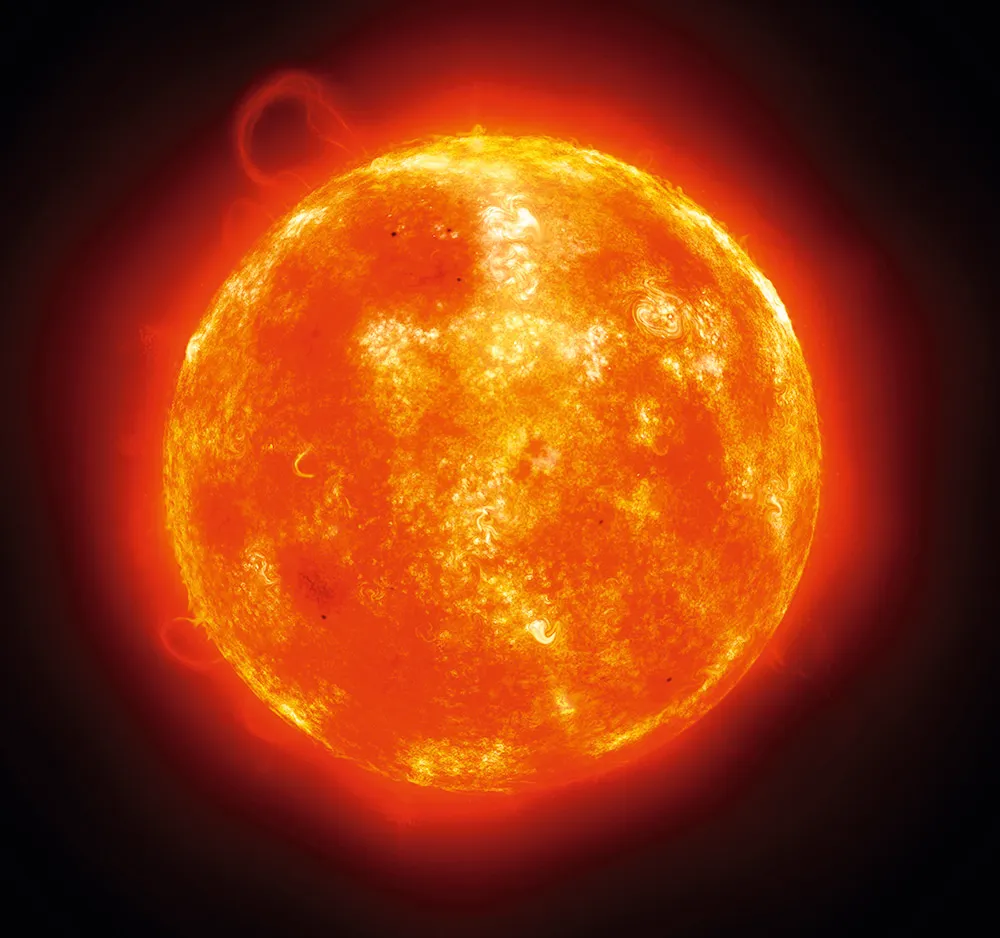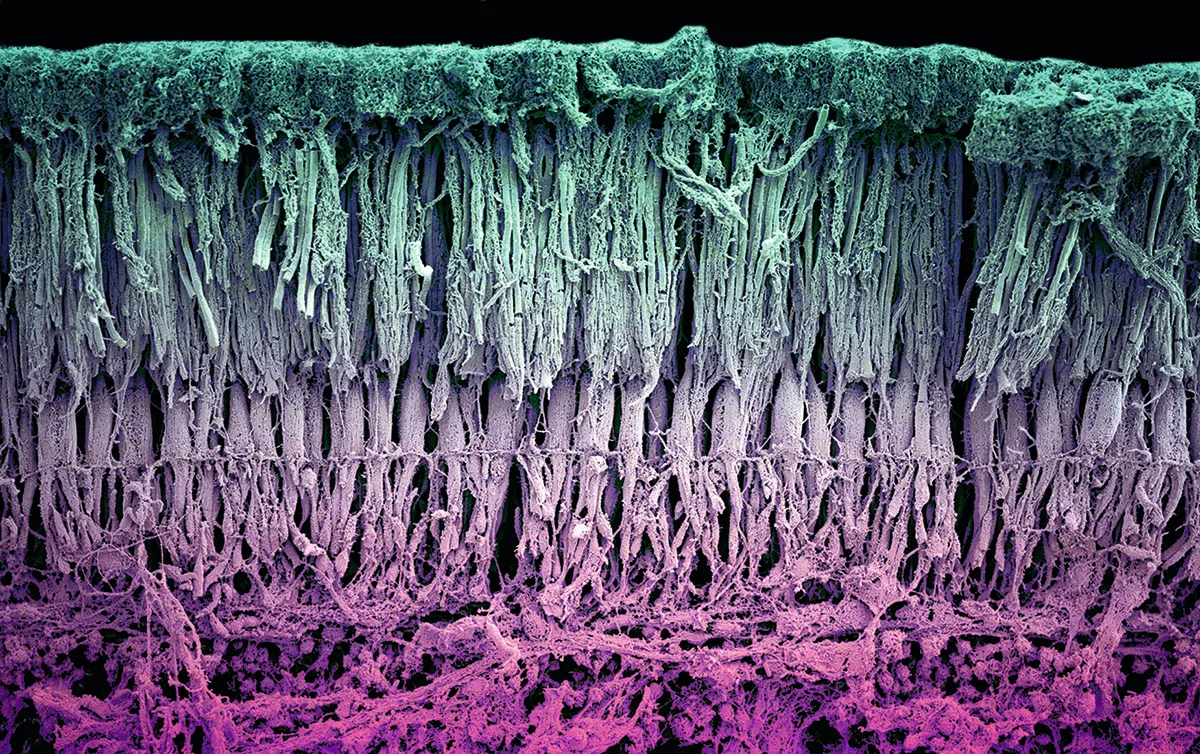Is light a wave or a particle?
Neither: light is its own unique phenomenon – the outcome of an interaction between electrical and magnetic fields – and it behaves like both waves and particles.
Most of us were taught at school that light is a wave. This is because it does things that waves do. So, for example, waves undergo interference. To understand this, imagine that you’ve just dropped two stones in a still pond. Each of those stones will create ripples, with the water creating waves that move up and down.
Eventually ripples originating from each stone will hit each other, and the waves travelling in the same direction at that point (up and down, rather than the same direction across the water) will become stronger – this means if a wave peaking upwards hits another wave peaking upwards, it will grow stronger. Equally, those waves travelling in opposite vertical directions could cancel out each other’s movement. This is interference – and the same thing happens with light.
However, the quantum revolution of the 20th Century made it clear that light also behaves as if it were a stream of particles. Einstein realised that this was necessary for the photoelectric effect – the mechanism behind solar cells – to work. And our entire understanding of the interaction of light and matter requires light to act like particles known as photons.
Perhaps the easiest way to think of light is as a stream of particles, but quantum particles, which are unlike ones that we can see. And all quantum particles, whether they are photons, or matter particles such as electrons, have wave-like behaviour.
What is the speed of light?

For many years, the speed of light was measured more and more accurately, but now we know exactly how fast it is – 299,792,458 metres per second.
Hummingbird wings can flap 4,200 times a minute. This sounds fast, but in the time of one invisibly fast flap, light can cross the Atlantic. The quickest that a human has ever travelled (on Apollo 10) was 11,094 metres per second, just 0.0037 per cent of the speed of light.
Light speed is the ultimate limit: Einstein’s Theory of Special Relativity tells us that it is physically impossible to accelerate past the speed of light.
How is light created?

Light is produced when an electron in an atom drops to a lower energy level, releasing the energy as a photon. Quantum physics tells us that atomic electrons can only have certain fixed levels of energy, so that when an electron drops to a lower level it will emit a predictable amount or ‘quantum’ of energy. The further the electron drops, the higher the energy of the photon.
The light given off by the Sun has a mix of energies making it look white, though it can appear yellow or even red as the Earth’s atmosphere scatters blue photons, reducing the blue content of the direct sunlight.
How does light create colour?

When light hits an object, that object absorbs the light, but then re-emits some of it (called reflection, though the light doesn’t bounce off like a ball). The photon energies in the re-emitted light determines the colour of the object. So, for example, a red object re-emits relatively low-energy red photons.
The structure of the atoms making up the object determines how far electrons can drop in energy and so the colours produced. But sometimes, such as with feathers, colours are created by refraction, which is also how rainbows occur. Here, photons with different energies travel in different directions, splitting the colours.
Why can’t humans see all light?

The light that we see is just a small part of the electromagnetic spectrum, which stretches from radio through to X-rays and gamma rays. A fundamental property of photons is the amount of energy they carry, corresponding to the wavelength of the light (the distance for a wave to return to the same position in its cycle). For visible light, we call this the light’s colour.
No means of detecting light can ‘see’ the entire spectrum. You can’t pick up X-rays with a radio receiver, for instance. However, some animal eyes can cope with energies a little lower than humans can see – the longer-wavelength infrared light – while others pick up the slightly higher energy ultraviolet light with its shorter wavelength. This can be useful because many flowers have ultraviolet patterns visible to pollinating insects, while hawks can detect small mammals in the grass far below them just from the ultraviolet glow of urine trails.
The precise colours our eyes detect depend on light-sensitive cells known as cones. We have three types of these that are most sensitive to colours around blue, green and yellow/red. The hawks seeing ultraviolet have a fourth cone type, while many mammals only have two kinds of cone, as their eyes are dominated by colour-insensitive rod cells, essential for night vision. This is because mammals were originally nocturnal.
Primates like humans appear to have gained the extra cone type around 35 million years ago – our colour range, it is suggested, was particularly suited to finding fruit.
Read more:
- What would be the effects of light having mass?
- What is polarised light?
- Why does light leave the position from which it is created?
- Does the speed of light ever change?
To submit your questions email us at questions@sciencefocus.com (don't forget to include your name and location)
